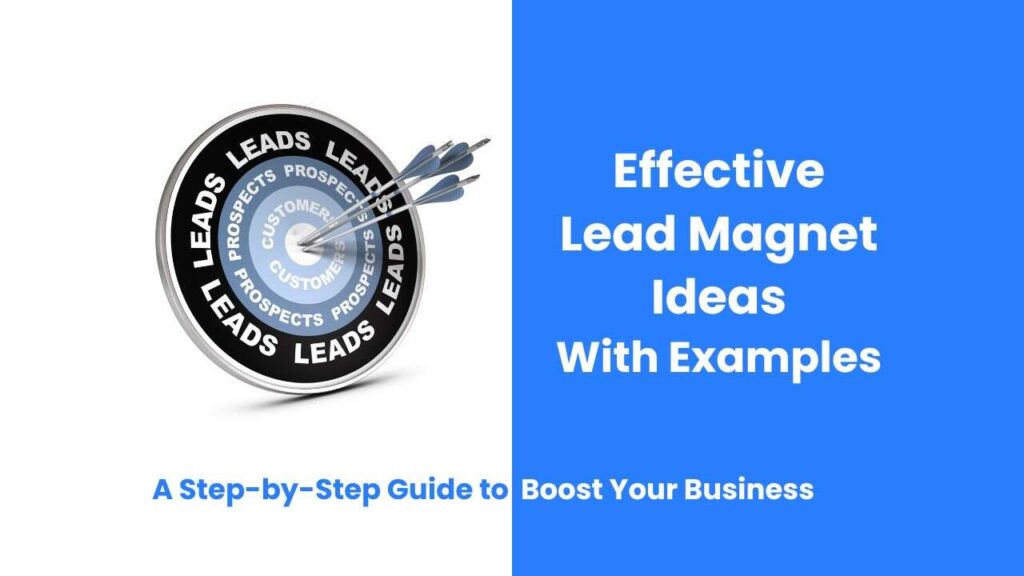How to Find prospects who are ready to buy, is one of the biggest challenges salespeople face today. In a world brimming with distractions, identifying potential customers who are on the brink of making a purchase can feel like searching for a needle in a haystack. But it doesn’t have to be that difficult. With the right approach, finding prospects who are not only interested but ready to buy becomes far more achievable. Let’s dive into the step-by-step guide that will help you streamline this process, from identifying the right customers to closing deals with confidence.

Understanding the Importance of Timing
One of the key elements in How To Find Prospects Who Are Ready To Buy is recognizing that timing is everything in sales. You could have the perfect product, an unbeatable price, and the most engaging pitch, but if your timing is off, you’ll likely lose the deal. How to Find prospects who are ready to buy at just the right time? By identifying and acting on buying signals — specific behaviors or actions that indicate a customer are preparing to make a purchase.
Step 1: Create and Refine Buyer Personas
Before you can start finding prospects, you need to have a clear understanding of who your ideal buyers are. Creating these personas allows you to segment your audience and tailor your outreach efforts to their specific needs.
Think of it this way: not everyone who shows interest in your product is ready to buy. Some might just be window shopping. How do you find the right prospect? By using buyer personas to identify traits of customers who have already purchased from you. What industry do they work in? What’s their job title? Are they decision-makers? Knowing these details will help you focus on leads that match your target.
Pro Tip: Don’t just create a buyer persona and call it a day. Continuously refine it based on real customer data. This will ensure you’re always targeting the best prospects.
Step 2: Utilize Data to Identify Potential Prospects
With technology advancing rapidly, finding potential prospects has become easier. Tools like AI-driven prospecting software can analyze patterns in behavior and engagement to predict which leads are most likely to convert into customers. It refers to technologies like HubSpot, Salespanel, or LinkedIn Sales Navigator, which track lead behavior, helping you see who’s opening your emails, visiting your website, or interacting with your social media content.
These tools essentially take the guesswork out of How To Find Prospects Who Are Ready To Buy by offering data-backed insights into who’s hot and who’s not.
Step 3: Recognize Key Buying Signals
So, what should you be looking for? Here are some key buying signals that can help you identify sales-ready leads:
- Engagement with Pricing Pages: If a prospect is visiting your pricing page, they’re more than just casually interested. They are actively evaluating the cost and likely comparing it with other options.
- Requests for Demos or Free Trials: A request for a product demo or a sign-up for a free trial is a clear sign that a lead is seriously considering your offering.
- Frequent Engagement: A prospect who frequently visits your website, opens your emails, and engages with your social media posts is showing strong intent.
- Questions about Contracts or Policies: Leads who ask questions about pricing policies, contract terms, and post-sale processes are usually at the final stages of their decision-making journey.
Recognizing these buying signals helps you prioritize leads who are closer to making a purchase, allowing your sales team to focus their energy where it matters most.
Step 4: Leverage Content to Nurture Prospects
When prospects show early signs of interest but aren’t quite ready to buy, content can be an excellent way to nudge them closer to a decision. One of the best ways to do this is by creating personalized content that speaks directly to their needs.
For example, many businesses use email marketing to nurture leads by sending them targeted content like case studies, white papers, or webinars. This keeps your brand top-of-mind and gives potential buyers the information they need to make an informed decision.
Pro Tip: Tools like email marketing automation platforms can help you send the right message to the right person at the right time, increasing the likelihood of conversion.
Step 5: Implement Lead Scoring
Lead scoring is an essential part of How To Find Prospects Who Are Ready To Buy. Lead scoring is a system that assigns points to prospects based on their interactions with your business. The more points a lead accumulates, the higher their buying intent. For example, if a lead visits your pricing page, they get 10 points. If they request a demo, that’s 20 points.
This way, you can systematically find the right prospects and focus your energy on leads that are more likely to convert into customers.
Step 6: Talk to Your Sales Team
Your sales team is an invaluable source of insights when it comes to identifying prospects ready to buy. They’re the ones on the front lines, having direct conversations with leads. Ask them questions like:
- What common objections do you hear from prospects?
- Which features or benefits resonate most with ready-to-buy leads?
- What types of questions do serious buyers ask?
By gathering this information, you can refine your approach to How to search the prospects and improve your chances of finding leads that are further down the funnel.
Step 7: Use Social Proof to Build Confidence
One of the most powerful tools in your sales arsenal is social proof. This refers to the concept that people are influenced by the actions of others. Testimonials, reviews, and case studies all serve as social proof and can help persuade hesitant prospects that your product or service is the best choice.
Including these forms of social proof in your sales process builds trust and confidence, making it easier to close deals with prospects who are on the fence.
Step 8: Personalize Your Outreach
There’s nothing worse than receiving a generic, one-size-fits-all email when you’re considering making a purchase. Personalization is key to finding prospects who are not only interested but ready to buy.
Tailor your communications to each lead’s specific needs. Reference their company, their pain points, and how your solution can help them. The more personalized your outreach, the higher the likelihood that you’ll connect with the right prospect at the right time.
Pro Tip: Use AI tools for prospecting like LinkedIn Sales Navigator, Salespanel or HubSpot to gather detailed information about your leads before reaching out.
Step 9: Follow Up Effectively
Effective follow-up is often the difference between a closed deal and a missed opportunity. Many salespeople give up after the first or second attempt, but data shows that the majority of sales are made between the fifth and twelfth contact. Consistent, strategic follow-ups are essential for How To Find Prospects Who Are Ready To Buy.
When following up, don’t just check in with “Are you ready to buy yet?” Instead, offer value with each follow-up. Send them a relevant case study, offer to answer any lingering questions, or provide additional insights based on their specific needs.
Step 10: Make the Buying Process Easy
Finally, make it as easy as possible for your prospects to say “yes.” Eliminate any unnecessary steps, streamline your purchasing process, and offer flexible payment terms if applicable. The easier you make it for a prospect to buy, the more likely they are to do so.
Conclusion
“How to Find prospects who are ready to buy” doesn’t have to feel like an impossible task. By following these 10 steps, from refining your buyer personas to leveraging the power of AI tools and lead scoring, you can consistently identify and engage with high-intent leads. Remember, the key is to focus your efforts on the right people at the right time and to continuously fine-tune your approach based on real data. With these proven strategies on “How To Find Prospects Who Are Ready To Buy” you can boost your sales with effective prospecting techniques and actionable insights.
Frequently Asked Questions
Here are some more articles recommended for you:
Actionable Ways to Build Client Relationships That Last
Effective Lead Magnet Ideas With Examples: A Step-by-Step Guide to Boost Your Business



